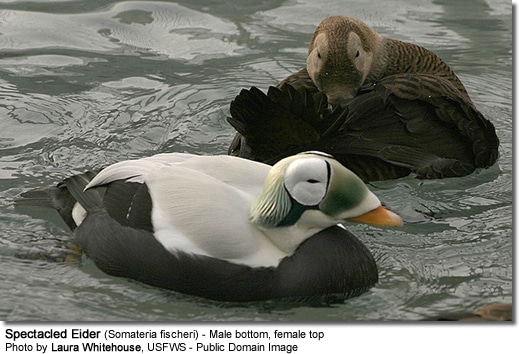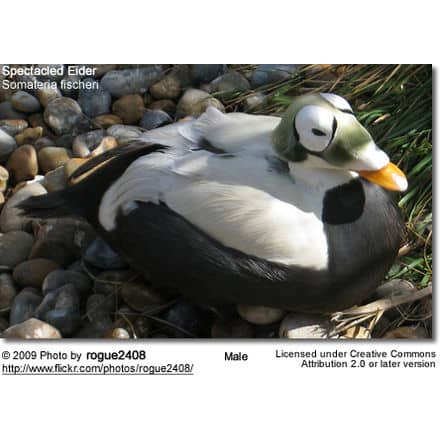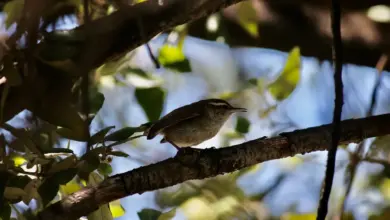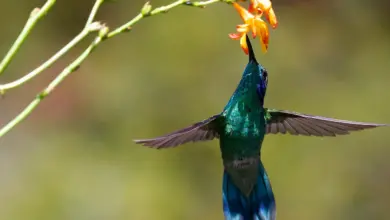Spectacled Eiders (Somateria fischeri)
The Spectacled Eiders (Somateria fischeri) is a large sea duck, which breeds on the coasts of Alaska and northeastern Siberia. It winters in often enormous flocks at sea in the Arctic along the edge of the pack ice.
The binomial commemorates the German scientist Johann Fischer von Waldheim.

Nesting / Breeding:
The lined nest is built on tundra close to the sea, and 5-9 eggs are laid.
Description:
The Spectacled Eider is slightly smaller than the Common Eider at 52-57cm. The male is unmistakable with its black body, white back, and yellow-green head with the large circular white eye patches that give the species its name.
The female is a rich brown bird, but can still be readily distinguished from all ducks except other eider species in size and structure. The paler googles are visible with a reasonable view, and clinch identification. Immature birds and eclipse adult drakes are similar to the female.

Call / Vocalization:
The drake’s call is a weak crooning and the female’s a harsh croak.
Relevant Resources
Diet / Feeding:
Spectacled Eiders dive for crustaceans and mollusks – which make up their main diet.
Ducks generally feed on larvae and pupae usually found under rocks, aquatic animals, plant material, seeds, small fish, snails, and crabs.
Feeding Ducks …
We all enjoy ducks and many of us offer them food to encourage them to come over and stay around – and it works! Who doesn’t like an easy meal?
However, the foods that we traditionally feed them at local ponds are utterly unsuitable for them and are likely to cause health problems down the road. Also, there may be local laws against feeding this species of bird – so it’s best to check on that rather than facing consequences at a later stage.
- Foods that can be fed to Ducks, Geese, and Swans to survive cold winters and remain healthy when food is scarce in their environment.
Please note that feeding ducks and geese makes them dependent on humans for food, which can result in starvation and possibly death when those feedings stop. If you decide to feed them, please limit the quantity to make sure that they maintain their natural ability to forage for food themselves – providing, of course, that natural food sources are available.
Beauty Of Birds strives to maintain accurate and up-to-date information; however, mistakes do happen. If you would like to correct or update any of the information, please contact us. THANK YOU!!!




